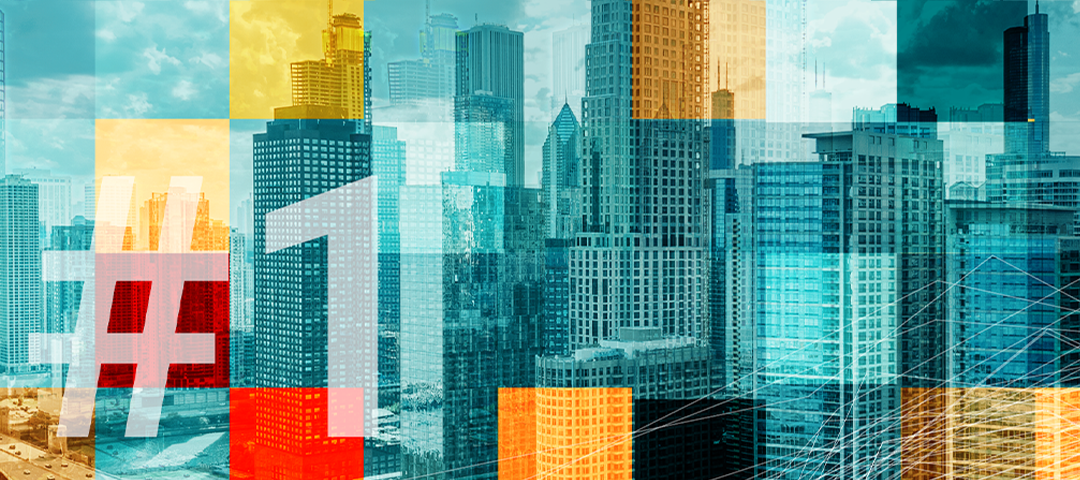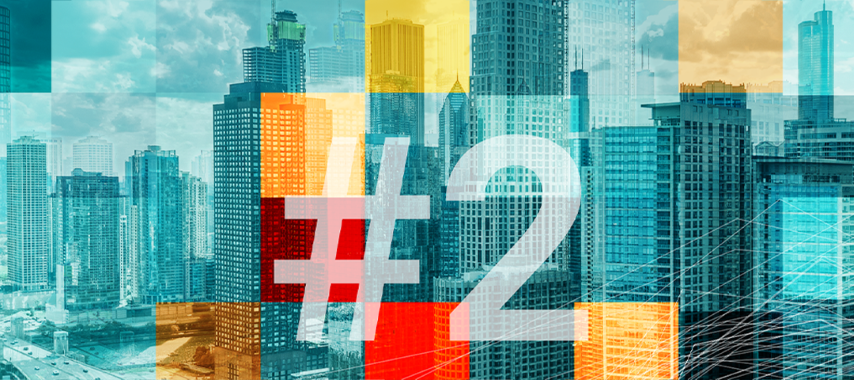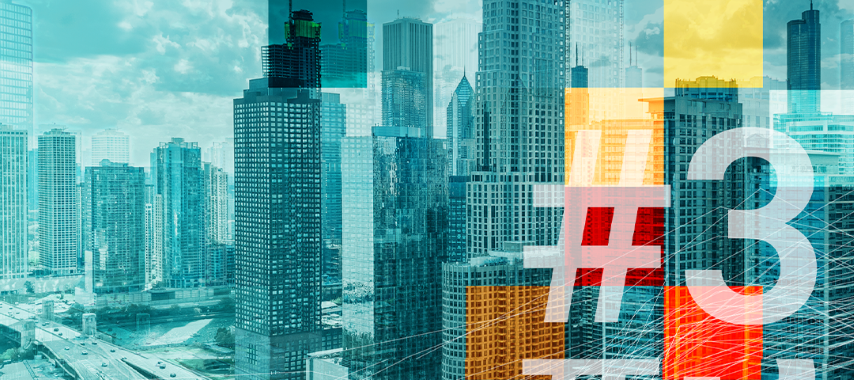MIPIM 2022: 3 Key Takeaways

MIPIM 2022, a four-day program of conferences, events, and exhibitions with over 3,800 exhibiting companies from 100 countries has finally reopened its doors in Cannes. Everything seemed to be back to normal as far as excitement and engagement to meet in person at MIPIM, yet everything changed since the last big editions in 2018 and 2019: Covid altered the way people work in buildings, climate change transformed the way business goals are set and recent developments in Ukraine seem to have disrupted the agendas altogether.
We have put together a quick rundown of the main MIPIM 2022 takeaways and a thorough grasp of what this edition was all about.

PROPTECH’S RISE TO THE INDUSTRY CHALLENGE: DATA FRAGMENTATION
PropTech is becoming more diverse and powerful: Digitalize and cut fragmentation.The real estate tech world continues to expand. New technologies and investment markets begin to make a larger impact by bringing about deep, fast, and steady digitalization within companies. E.g. virtual tours, eSigning, property management automation, conversational AI, blockchain and real estate crowdfunding platforms start taking shape and innovate the industry.
2022 will probably show a trend of consolidation within the real estate sector, which is expected to continue, especially as legacy players look to add PropTech software companies to their portfolio. After all, such an expansion in the real estate tech sector is normalizing digitalization and the use of ultra-sophisticated and dedicated software. What has emerged from this 4-day celebration of the RE universe is the unspoken need to implement an ecosystem approach. An approach envisioned and carried on as a single source of truth, a sort of metaphysical milieu in which everything clicks, the dots connect. This is meant to not only drive short-term solutions, but to also create long-term strategies and new effective learnings.
Well into 2022, there will likely be more investment in real estate software surrounding the construction and property management spaces—two sectors that were standout areas for investment within PropTech in 2021. There’s also expected to be more consolidation in the industry as companies mature and look for exits. All told, venture-backed companies in the real estate and property tech space raised nearly $21 billion, Crunchbase data shows.
Digitalization is already disrupting real estate. At MIPIM, a growing emphasis on data is primed to reshape the commercial real estate industry. Identifying abnormal returns while analyzing investments, optimizing operations to improve building sustainability, and crafting workplaces that integrate effortlessly into peoples’ workday all benefit from a data-centric approach. However, companies and investors are facing a raft of challenges on this front, from having outdated systems to inconsistent standards. As BuildingMinds Ceo Jens Mueller preaches, “Going net-zero? Don’t just change your KPIs. Change your view on data,” companies need to change their overall view on data; mere reporting or data collecting won’t cut it! Thinking of data as a trend or as a “nice to have" isn’t enough. To be data-driven means endorsing and bringing about true change, a shift in how business is managed.
As organizations struggle with security breaches, cyber-AI can be a force multiplier. The holy grail here is to opt for solutions that embed cyber-security as a core feature that will automatically do the work for businesses. IT security solutions are essential for all kinds of businesses, particularly when you think about how important the internet and any kind of digital system are for day-to-day operations.
Digitized modern buildings generate an enormous amount of data that must be stored, managed securely, and above all protected. According to a study reported on Betanews.com, cybercriminals can penetrate 93 percent of company networks with external attackers able to breach an organization's network perimeter and gain access to local network resources. MIPIM has only reiterated how intelligent building solutions or smart buildings are increasingly becoming the norm across many property types. According to Lynn Martin, CEO Red Bison Technology Group, “a move toward a centralized or converged network as a ‘backbone’ for technology infrastructure within buildings allows building owners to monitor all systems at once with end-to-end visibility and allows for quicker identification and resolution of cybersecurity breaches.”

ACTIONS PLANS ARE THE COMPETITIVE ADVANTAGE
Pushing for Net-Zero, don’t stop now. As the clock is ticking, there’s no more time to beat around the bushes, hence companies and governments shouldn’t stop now but, together with administrations and local politicians, must keep the Net-Zero momentum going. Regulatory and disclosure requirements will continue to drive transparency, however the trend to classify as Article 8 and sometimes even 9 will require companies to define concrete, measurable actions – companies with clear sustainability benchmarks will gain attractiveness, those without will feel the pressure.
According to Morningstar, although the investment industry is still adjusting to the measures, and uncertainties about Article 8 and Article 9 classifications persist, funds classified as Article 8 and 9 currently represent up to 21% of total European funds and up to 25% of total European fund assets. Of these, 18% were classified as Article 8 and 3.6% as Article 9.
“Half by 2030, by 2050 all“ – this slogan from the Intergovernmental Panel on Climate Change leaves no doubt. Already, 43% of investors say they have a net-zero or race-to-zero carbon goal. And another 28% expect to have one within the next 12 months. Sounds great, but the hard part is what follows after making the commitment: Taking action. None of the major G7 stock indexes are currently even on a 2°C pathway. Real estate is currently responsible for 38% of total carbon emissions. And 85-95% of buildings in the EU are expected to still be standing in 2050. To meet the goal of 55% emission reductions by 2030, the Renovation Wave aims to renovate 35 million inefficient buildings.
There is no alternative to large scale digitalization. Tapping into all static information and dynamic data isn’t just a necessary business priority, it also provides the framework for the integration of future technologies. Complex and dynamic calculation models need to be created, implemented and monitored. The models will incorporate CO2 taxonomy, compliance, investment, retrofitting, valuation, rental/leasing conditions, transactions, material, technology, etc. All of these will have to be aligned with companies’ strategic and tactical goals. And one thing is clear: Excel is not an option. Data-driven analytics can uncover underlying trends and new potential not identified by traditional methods. McKinsey estimates that nearly 60% of predictive power will have to come from non-traditional variables. Smart AI implementation is key to processing vast amounts of data and gaining critical insights from previously unrelated data points.
More innovation and new technology are key drivers of positive change; at the same time, such major boosters are the only way to collect and standardize the necessary data to begin this journey. New analytics tools that accurately measure sustainability performance across portfolios are playing a bigger role in helping companies move past the planning stage. But much more is required, with little time to waste. The decade of action has begun. Retrofitting existing buildings and properties, whenever possible, will be essential to meet market demand for net-zero carbon space and help with the transition to a low carbon world.
Moving on, the big debate is and will be how can sustainability commitments truly materialize into action?

THE FUTURE OF WORKSPACE IS IN THE HANDS OF DATA
Space will be and will remain flexible: The new normal is flexibility. Throughout the pandemic, it’s become clear that people are much more interested in life balance: Not work-life balance, but life balance. The COVID-19 pandemic has forced us to rethink the way we live and work. It is transforming every industry and how business is conducted. Hybrid workplaces will be more in demand in the near future, a huge boon to the PropTech purveyors who will keep on pushing and preaching for better and more efficient data handling. Space will be and will remain flexible. Hybrid and flexible work increases the need for data-driven building management that allows for asset managers to provide only the space that is really needed.
Changing employee needs, alongside the battle to both attract and retain talent, are going to be front and center in 2022 amid an increasingly hybrid work environment. Workplace design has an increasingly important role to play, supporting greater cross collaboration wherever employees work, boosting energy levels but also encouraging communities to thrive. This is of paramount importance in order to guarantee the well-being, health and safety of tenants, workers, and overall patrons.
Following COVID-19, 53 percent of employees globally expect to continue working from home one to two days a week over the next two years. As the employee experience becomes a growing priority for businesses to help people perform at their best, a hybrid workplace will provide flexibility and choice. “Diversity in work environments helps motivate and inspire the many different individuals within a workforce,” says Nuno Fernandes, Design Director, EMEA at Tétris.
It is also extremely relevant to constantly keep a hand on the pulse of a building to analyze the working spaces’ performance and optimize them to meet the demands for more flexibility, efficiency and quality. A word of wisdom overheard at MIPIM ’22 is to conduct analysis on occupancy peaks and lows, visualize the utilization of your workplaces in real-time, and develop agile strategies to improve cost efficiency, space utilization and working conditions.
All in all, this edition of MIPIM has only reiterated how intelligent building solutions or smart buildings are increasingly becoming the norm across many property types. The key learning is to keep striving for net-zero, making sure not to lose momentum and to integrate your ecosystem as PropTechs are on the rise.
Bibliography:
https://www.jll.de/en/trends-and-insights/investor/five-big-questions-real-estate-is-asking-in-2022
https://www.bankrate.com/real-estate/5-trends-for-housing-market-in-2022/
https://www.fool.com/real-estate/2022/01/25/5-real-estate-trends-to-watch-out-for-in-february/
https://www.citysignal.com/5-real-estate-trends-to-expect-in-2022/
https://news.crunchbase.com/news/proptech-startups-vc-investment-forecast-2022/
https://www.weforum.org/agenda/2021/08/now-time-for-action-on-sustainability-reporting/
https://www2.deloitte.com/de/de/pages/enterprise-performance/articles/tech-trends-2022.html
https://www.forbes.com/sites/valleyvoices/2019/02/22/the-proptech-opportunity
/
https://betanews.com/2021/12/20/cybercriminals-penetrate-93-percent-of-company-networks/
https://www.jll.co.uk/en/views/5-reasons-businesses-will-embrace-hybrid-workplaces
https://www.us.jll.com/en/newsroom/as-smart-buildings-increase-so-does-cybersecurity-risk



